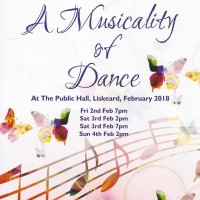
For example, try focusing on the drums, then the vocals, and so on.
#Musicality in dance definition professional
Most professional West Coast Swing dancers have solo dance experience, such as ballet, jazz, or hip hop, and many have trained in other partner dances, such as blues, Brazilian zouk, tango, or salsa.

This is where cross training can be helpful. Understanding musical phrasing is critical so you know when there are likely to be opportunities for expression, but that’s no good if you don’t have any creative ideas. Need help finding songs to study? Many West Coast Swing DJs are on Spotify: Ruby Lair’s playlists are a great place to start. If you’re new to listening to music this way, just listen for a while before you try solo or partnered dance practice. Then listen to songs you’ve never heard before and try to predict when the breaks will appear and when you can best accent the music. Pay attention to as many aspects of the sound quality as you can and think about how you would express them when dancing. Count the phrases in 8s find the 16- and 32-beat phrases (48-beats for blues music) and note the phrase changes, breaks, and opportunities to accent the music. Pick specific songs to study and listen to them repeatedly. Musical qualities to pay attention to include the volume, the rhythm, the mood, the instruments, and the vocals. Dancing with smooth, ballet-like movement to a hip hop song will let anyone watching know that you’re not in tune with the music. Don’t hit every break-you want to maximize your impact.Ĭredit: Chermiti Mohamed via Unsplash Matching Your Dance Style to the Musicīeyond the structure, expressing the quality of the music with movement is an important part of musicality. Some songs have only a few breaks, but others will have many. This will happen on an odd beat in a musical phrase, often on the first or fifth beat. Hitting the break means accenting a moment when the song breaks, that is, when the music pauses or holds for two beats or more. Nope! They just understand basic song structure, which allows them to listen and predict when the breaks will arrive. If you’ve ever seen dancers stop on a dime when a song pauses, you may have wondered, how did they do it? Do they just memorize every song?
#Musicality in dance definition free
The options available to you for accenting the music will vary slightly depending on which role you dance, but two great choices for any West Coast Swing dancer are to sweep or point your free arm and/or your head (sharply or smoothly, depending on the music). For example, when the first count appears in the third count of a sugar tuck, you can accent it by giving extra weight to the compression.

“Accenting,” or emphasizing, the first count of a phrase is an easy way to express the music. This means the first beat of a phrase in a song will not always occur with the first count of a pattern.

When you dance six count patterns to eight count music, as in West Coast Swing, you’re not always aligned with the song’s phrasing. The same idea applies, just with phrases of a different length.Ĭredit: Preillumination SeTh via Unsplash Accenting the Music Changes in the song generally happen when you transition to the next 16- or 32-beat section.īlues music, which you’ll hear often on the West Coast Swing dance floor, is often phrased in 48-beat sections. When a new paragraph begins, so does a new topic. Think of it this way: if a song is an essay, the 8-beat sections are sentences, and the 16- and 32-beat sections are paragraphs. Most songs are counted in 8-beat sections and phrased in 16-beat (two groups of 8) and 32-beat (four groups of 8) sections.


 0 kommentar(er)
0 kommentar(er)
